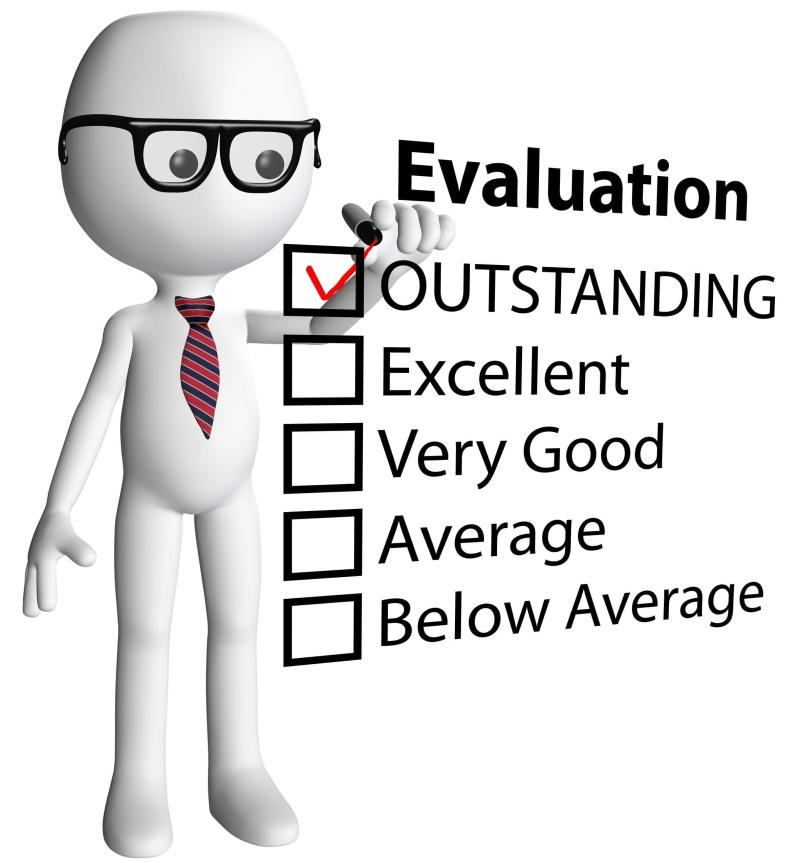How to evaluate supervisor performance?
Evaluating supervisor performance is crucial for ensuring effective leadership, team productivity, and overall organizational success. Here are key considerations and methods for evaluating supervisor performance:
Define Clear Expectations:
- Establish clear job expectations and responsibilities for supervisors. Clearly communicate these expectations to ensure that supervisors understand their roles and the standards against which they will be evaluated.
Set Measurable Goals:
- Work with supervisors to establish measurable and achievable performance goals. These goals should align with the overall objectives of the team and organization.
Regular Feedback:
- Provide ongoing feedback throughout the performance evaluation period. Regular communication allows supervisors to understand their strengths, areas for improvement, and progress toward goals.
360-Degree Feedback:
- Collect feedback from multiple sources, including direct reports, peers, and higher-ups. This 360-degree approach provides a more comprehensive view of a supervisor's performance, highlighting areas that may not be immediately evident.
Key Performance Indicators (KPIs):
- Identify and track relevant KPIs that measure a supervisor's impact on team performance, employee engagement, and overall organizational success.
Adherence to Policies and Procedures:
- Assess a supervisor's adherence to organizational policies, procedures, and ethical standards. This includes compliance with HR regulations, fairness in decision-making, and consistency in applying policies.
Leadership Style:
- Evaluate the supervisor's leadership style. Consider factors such as their ability to inspire and motivate their team, effective communication, and the fostering of a positive work culture.
Problem Solving and Decision-Making:
- Assess a supervisor's ability to solve problems and make decisions under pressure. Evaluate the quality of their decisions and the impact on team and organizational outcomes.
Employee Development:
- Consider how well a supervisor supports the professional development of their team members. This includes providing training opportunities, constructive feedback, and guidance for career growth.
Team Building and Collaboration:
- Evaluate a supervisor's efforts in building a cohesive and collaborative team. Assess their ability to resolve conflicts, promote teamwork, and create a positive working environment.
Time Management:
- Assess a supervisor's time management skills. This includes the ability to prioritize tasks, meet deadlines, and allocate resources efficiently.
Continuous Improvement:
- Evaluate a supervisor's commitment to continuous improvement. This involves seeking and implementing feedback, staying updated on industry best practices, and adapting to changes in the work environment.
Employee Satisfaction and Retention:
- Monitor employee satisfaction and retention rates within the supervisor's team. High levels of satisfaction and low turnover can be indicators of effective leadership.
Self-Reflection and Development:
- Encourage supervisors to engage in self-reflection and actively participate in their own professional development. This demonstrates a commitment to personal growth and improvement.
Performance Appraisal Meetings:
- Conduct formal performance appraisal meetings to discuss the evaluation results with the supervisor. Use this opportunity to set future goals, address concerns, and provide constructive feedback.
By combining these considerations, organizations can develop a comprehensive approach to evaluating supervisor performance that contributes to the overall success of the team and the organization. Regular and constructive feedback is key to helping supervisors grow and excel in their roles.
Supervisory scrutiny: How to evaluate supervisor performance
Evaluating supervisor performance is important for ensuring that the workplace is running efficiently and effectively. There are a number of ways to evaluate supervisor performance, including:
- Self-evaluation: Supervisors can evaluate their own performance by setting goals, tracking their progress, and reflecting on their strengths and weaknesses.
- Peer review: Supervisors can also be evaluated by their peers. This can be done through anonymous surveys or focus groups.
- Subordinate review: Subordinates can also provide feedback on their supervisor's performance. This can be done through anonymous surveys or one-on-one meetings.
- 360-degree evaluation: A 360-degree evaluation is a holistic approach to evaluating supervisor performance that gathers feedback from subordinates, peers, and superiors.
Performance metrics: Determining key indicators for assessing supervisor effectiveness
When evaluating supervisor performance, it is important to focus on key indicators that are relevant to the role and the organization. Some common performance metrics include:
- Team performance: How well is the supervisor's team performing against its goals?
- Employee engagement: How engaged and motivated are the supervisor's employees?
- Employee turnover: How high is the turnover rate among the supervisor's employees?
- Employee satisfaction: How satisfied are the supervisor's employees with their jobs?
- Customer satisfaction: How satisfied are the supervisor's customers with the products or services they receive?
360-degree evaluations: Gathering feedback from subordinates, peers, and superiors
A 360-degree evaluation is a valuable tool for gathering feedback on supervisor performance from a variety of perspectives. When conducting a 360-degree evaluation, it is important to keep the following tips in mind:
- Choose the right participants: It is important to select participants who have a good understanding of the supervisor's performance. This may include subordinates, peers, and superiors.
- Develop a survey: The survey should include questions that assess the supervisor's performance on key areas such as leadership, communication, delegation, and problem-solving.
- Keep the survey anonymous: This will encourage participants to be honest and candid in their feedback.
- Analyze the results: Once the survey is complete, it is important to analyze the results carefully to identify areas where the supervisor is excelling and areas where they could improve.
Professional development: Using supervisor evaluations to guide leadership growth
Supervisor evaluations can be a valuable tool for professional development. By reflecting on their feedback, supervisors can identify areas where they can improve their leadership skills. Some common areas for professional development include:
- Communication: Supervisors can improve their communication skills by learning how to listen effectively, give clear instructions, and provide feedback in a constructive way.
- Delegation: Supervisors can improve their delegation skills by learning how to identify tasks that can be delegated, select the right people to delegate to, and provide clear expectations and support.
- Problem-solving: Supervisors can improve their problem-solving skills by learning how to identify problems, analyze root causes, and develop and implement solutions.
- Leadership: Supervisors can improve their leadership skills by learning how to motivate and inspire their team members, create a positive work environment, and deal with conflict effectively.
Supervisor of the year: Recognizing exceptional performance in leadership roles
Supervisor of the year awards are a great way to recognize and reward exceptional performance in leadership roles. When nominating a supervisor for an award, it is important to consider the following criteria:
- Leadership skills: Does the supervisor demonstrate strong leadership skills such as communication, delegation, problem-solving, and motivation?
- Team performance: Has the supervisor's team consistently exceeded its goals?
- Employee engagement: Are the supervisor's employees engaged and motivated?
- Employee satisfaction: Are the supervisor's employees satisfied with their jobs?
- Customer satisfaction: Are the supervisor's customers satisfied with the products or services they receive?
By following these tips, organizations can effectively evaluate supervisor performance and recognize exceptional leadership.











